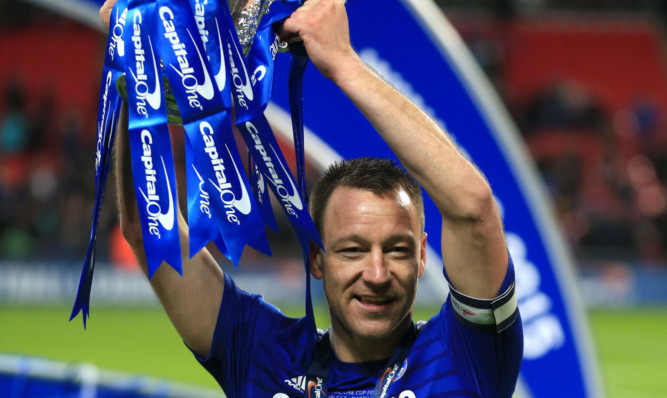
Next month the members of the Football Writers’ Association will be asked to choose their Footballer of the Year.
One man has emerged as a very obvious contender and that puts us all in a dilemma.
John Terry is playing some outstanding football. Most say it’s the best he’s played in years.
Last week Chelsea went out of the Champions League, in part because Terry uncharacteristically lost the player he should have been marking at two set-pieces.
But that’s the exception that proves the rule. As with Steven Gerrard’s slip last season, it’s when the most reliable player makes an error that you realise how much his performance is taken for granted.
Terry is the stand-out captain in modern football. He’s the best defensive organiser and the man most likely to throw his body into the firing line for his team.
Chelsea are clear at the top of the Premier League and he has already led them to victory in the Capital One Cup. He even scored in the Final.
By almost every measure he would be the perfect Footballer of the Year.
Then you remember October 23, 2011, when he was accused and later found guilty of racially abusing Anton Ferdinand.
You find yourself in the middle of a moral maze.
Back in 1947, when this award was first made, the journalists casting their vote were told that the statuette “should be given to the professional player who by precept and example is considered by a ballot of members to be the Footballer of the Year.”
That was supposed to forever distinguish the writers’ award from all others. It went not necessarily to the best player, but it had to go to one who set a good example.
Over the years, though, the lines became blurred.
Eric Cantona kung-fu kicked a fan, three-time winner Thierry Henry went on to take France to the World Cup Finals with his hand and Roy Keane confessed to deliberately trying to injure another player.
Then last year the award went to Luis Suarez, who’d had his own issues with the alleged use of racist language and was prone to the occasional nibble.
That decision alone should open the door for Terry not to be excluded on the grounds of past behaviour.
If he has the most compelling case, he should win. And I, for one, will be voting for him.

Enjoy the convenience of having The Sunday Post delivered as a digital ePaper straight to your smartphone, tablet or computer.
Subscribe for only £5.49 a month and enjoy all the benefits of the printed paper as a digital replica.
Subscribe